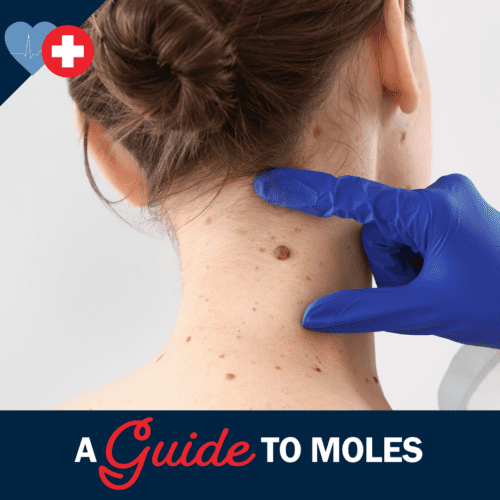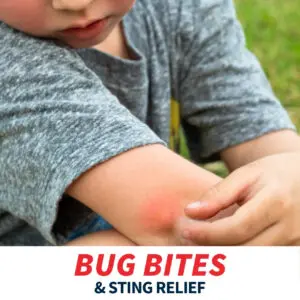A Guide to Moles: What’s Normal and When to See a Doctor
 According to the American Academy of Dermatology Association, nearly every adult has at least a few moles on the skin, most of which are harmless, known as common moles. Whether you have a mole here and there or several, keeping an eye on their appearance and watching for new ones developing is essential in keeping yourself safe and healthy. Some moles have the potential to become skin cancer, or melanoma, and if not removed, could spread to other parts of your body. But how do you know what a normal mole is and what may need attention from a doctor?
According to the American Academy of Dermatology Association, nearly every adult has at least a few moles on the skin, most of which are harmless, known as common moles. Whether you have a mole here and there or several, keeping an eye on their appearance and watching for new ones developing is essential in keeping yourself safe and healthy. Some moles have the potential to become skin cancer, or melanoma, and if not removed, could spread to other parts of your body. But how do you know what a normal mole is and what may need attention from a doctor?
What is a mole?
A mole, also referred to as a nevus in medical terms, is a growth on the skin. These can be your natural skin tone, brown or black and can appear anywhere on the body, although mainly in areas that are exposed to sunlight and UV rays. Moles are formed when skin cells, typically melanocytes that provide your natural skin color, grow in a cluster rather than spread across the skin. Most of the moles people develop will first appear in early childhood and, by adulthood, it is common for people to have between 10 and 40 moles. For those who spend a lot of time in the sun or using tanning beds, they may notice more moles developing over time.
What is considered a normal mole?
Normal moles come in a variety of colors, sizes and shapes. They should appear evenly colored, whether brown, tan or black, and may be raised, flat, round or oval. Most moles should remain less than 6 millimeters across, or about the width of a pencil eraser. Once a mole forms, it will typically remain the same size, shape and color for years. While most moles appear by adulthood, it is possible that new ones may form later in life, but these should always be evaluated by a doctor.
When to visit a doctor for a mole check
There are specific warning signs that could point to a mole being cancerous, known as the ABCDE rule.
- Asymmetry: One half of an existing mole or birthmark does not match the other.
- Border: Edges of the mole are irregular, ragged, notched or blurred.
- Color: The mole is not the same color all over and may include various shades of brown or black, or at times include patches of pink, red, white or blue.
- Diameter: The mole or spot is larger than the typical 6 millimeters across, although some melanomas can develop smaller in size.
- Evolving: An existing mole is changing in size, shape or color.
Along with the ABCDE rule, there are other warning signs to watch for that could point to skin cancer, according to the American Cancer Society, including:
- A sore that doesn’t heal
- Spreading of pigment from the border of a mole or spot into the surrounding skin
- Redness or new swelling that extends beyond the border of a mole
- A change in sensation, such as itchiness, tenderness or pain
- Surface changes to the mole, such as scaliness, oozing, bleeding or the appearance of a lump or bump
In general, if you see a new spot or mole that appears to have changed, it’s always a good idea to have it evaluated by a doctor. Even if it ends up being benign, it’s better to have it checked just to be safe as it is possible that some melanomas do not fit the standard warning signs.
Your skin is the largest organ of your body, and just like the rest of your body, keeping it healthy is essential. At Midwest Express Clinic, our experienced providers will closely examine any mole or spot you are concerned with and, if necessary, remove it for diagnostic testing. Don’t put off a dermatologic examination because treatment and removal of melanoma can be simple when found early. Visit us online for a fast, easy check-in at your nearest location today!




